Beyond a mere beverage, Japanese green tea encapsulates a cultural legacy, a passage to well-being. Steeped in Japan’s history, the art of tea culture breathes through meticulously nurtured green tea leaves. Let us explore this lesser-known world of the brewery to find the best Japanese green tea and discover its diverse flavours while learning the art of brewing the perfect cup of tea.
From solving the mystery of finding the best Japanese green tea to dissecting the art of infusion, get ready to explore the intricate art of Japanese tea tradition. Whether you’re curious about the essence of matcha, the serenity of hojicha, or the intricacies of sencha infusion, our voyage covers it all.
Unravelling the Mystery: What Is the Best Japanese Green Tea?
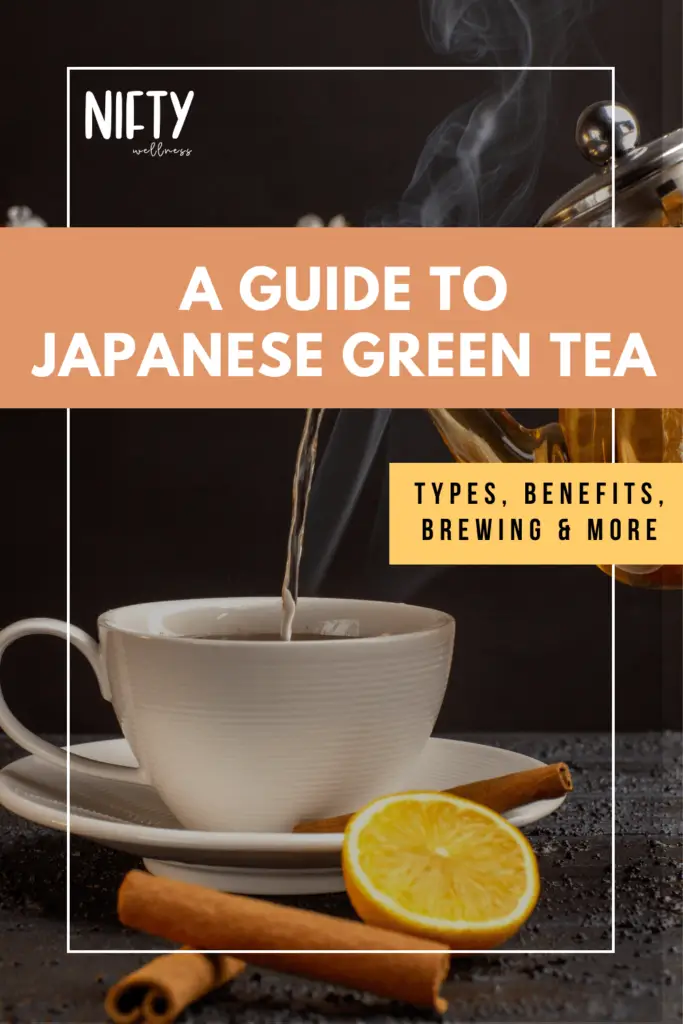
If you are yet to enter the world of green teas to discover the best Japanese green tea, fret not, for we have got you covered.
Apart from being celebrated as a facilitator of weight control, there are various benefits of Japanese green tea. There is a whole new realm of Japanese green tea brands offering multifold choices, each possessing unique attributes.
We are about to take you into this spellbinding cosmos of the best Japanese green teas, where time-honoured customs merge with modern innovation to craft an unparalleled tea-tasting experience. Read on to learn all about the different types of Japanese green teas, each with distinct characteristics crafted by the best Japanese green tea brands.
Matcha: The Ceremonial Green Elixir

Matcha is essential in traditional tea ceremonies, representing the essence of powdered green tea. If you are Intrigued by the query, “What does matcha taste like?” we are here to enlighten you. Matcha unveils an opulent, umami-rich flavour tinged with earthy, subtly sweet undertones akin to the essence of vegetation or grassiness.
Many people question, “Is matcha good for weight loss?” Certainly, according to health experts, matcha does help fasten the weight loss process.
Do you want to know how to brew matcha tea? Here’s a brief guide:
Sift the matcha powder into a bowl, infuse it with hot water (175°F), and wield the whisk vigorously until a frothy elixir materializes. Tailor the matcha and sweetener proportions to your preferences, and savour the essence.
Hojicha: The Roasted and Earthy Delight
Hojicha tea stands out due to its special roasting process. Post steaming and drying, the leaves adopt a robust, earthy flavor with a hint of sweetness. Hojicha, being low in caffeine, offers a soothing and versatile option for various preparations. It is rich in antioxidants and may offer digestive benefits.
With its comforting taste and delightful aroma, Hojicha adds a unique twist to traditional green teas, making it a perfect warm escape from your busy day. Enjoy it alone or share it with friends; Hojicha promises a soothing and satisfying tea experience that’s simply irresistible.
Read our blog Sencha vs Hojicha: A Detailed Comparison of Two Popular Japanese Green Teas and explore the world of tea to uncover the secrets of these Japanese classics.
Sencha: The Hidden Gem of Japanese Green Teas
What is Sencha green tea if not an unsung hero compared to Matcha and Hojicha that thrives in obscurity? Flaunting a rejuvenating, grassy flavour that is as vibrant as it is versatile, Sencha green tea embodies refreshment like nothing else.
The question now arises: how to brew Sencha?
Simply allow a teaspoon of sencha leaves to steep in hot water (176-185°F or 80-85°C) for 1-2 minutes, then strain the aromatic elixir for your enjoyment.
Genmaicha: The Unique Blend of Green Tea and Brown Rice
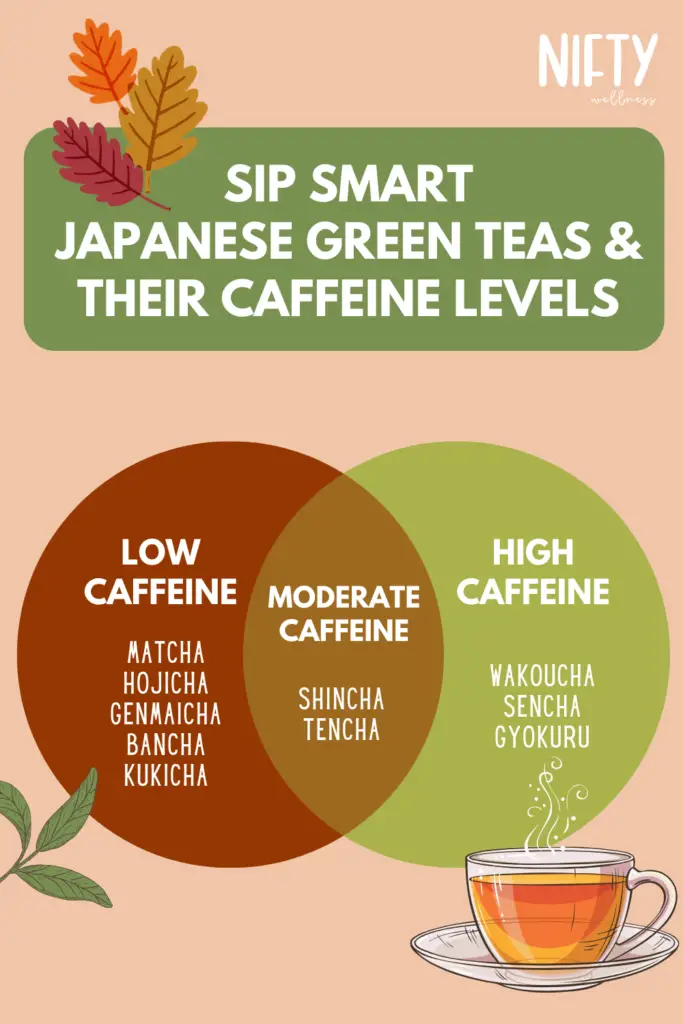
Genmaicha, a revered Japanese tea, blends green tea leaves with roasted brown rice. This historic combination yields a soothing, low-caffeine tea with green tea’s grassy notes and the nutty essence of rice. Genmaicha tea, often called “popcorn tea,” charms with its playful character due to occasional rice kernel pops during roasting.
Touted to be one of the most versatile kinds of green tea, Genmaicha has gained worldwide acclaim for the same. Loved by tea lovers across the globe, Genmaicha is known to be compatible with meals, making it a cherished part of the tea world. A testament to Japanese tea’s artistry and tradition, you can try Genmaicha, which various reputed Japanese tea brands sell.
Gyokuro: The Shade-Grown Elixir
Gyokuro, a revered Japanese green tea, is a shade-grown masterpiece. Renowned for its unique cultivation method, Gyokuro leaves are shielded from direct sunlight for several weeks before harvest. This shading process enhances the tea’s rich umami flavor and vibrant green color.
Prized for its complex taste profile and its positioning as a symbol of tea craftsmanship, Gyokuro is often considered one of Japan’s finest teas.
Shincha: The First Harvest
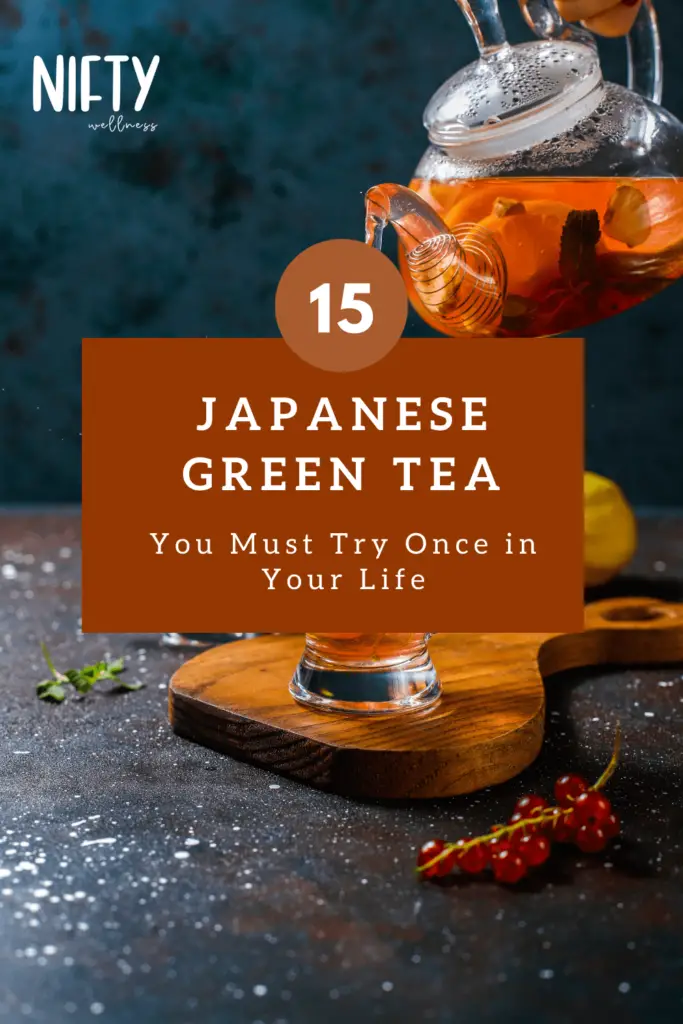
Shincha, or “new tea,” is the initial harvest of the year in Japan, typically gathered in early spring. Celebrated for its vibrant flavor, Shincha reflects the youthful vitality of leaves after winter dormancy. Offering a refreshing astringency, Shincha presents a unique blend of sweetness and its signature umami taste reflecting the changing seasons.
Combining fresh beginnings in every sip, Shincha’s bright green colour and aroma offer a taste of renewal like no other green tea.
Bancha: The Versatile Brew
Yet another Japanese green tea that is celebrated for its versatility, Bancha is often enjoyed in between meals. Unlike other green teas, Bancha has a very mild taste and a significantly lower caffeine content. With subtle grassy notes derived from later harvests, Bancha provides a gentle tea experience. Thanks to its reduced caffeine levels, Bancha makes for a perfect day-long beverage that does not pose the threat of overstimulating tea lovers.
Whether hot or cold, Bancha adapts effortlessly, even finding a place in culinary creations. A popular choice for tea enthusiasts looking for a balanced and easy-going brew, Bancha is all about its simplicity and adaptability as a drink.
Kukicha: The Twig Tea
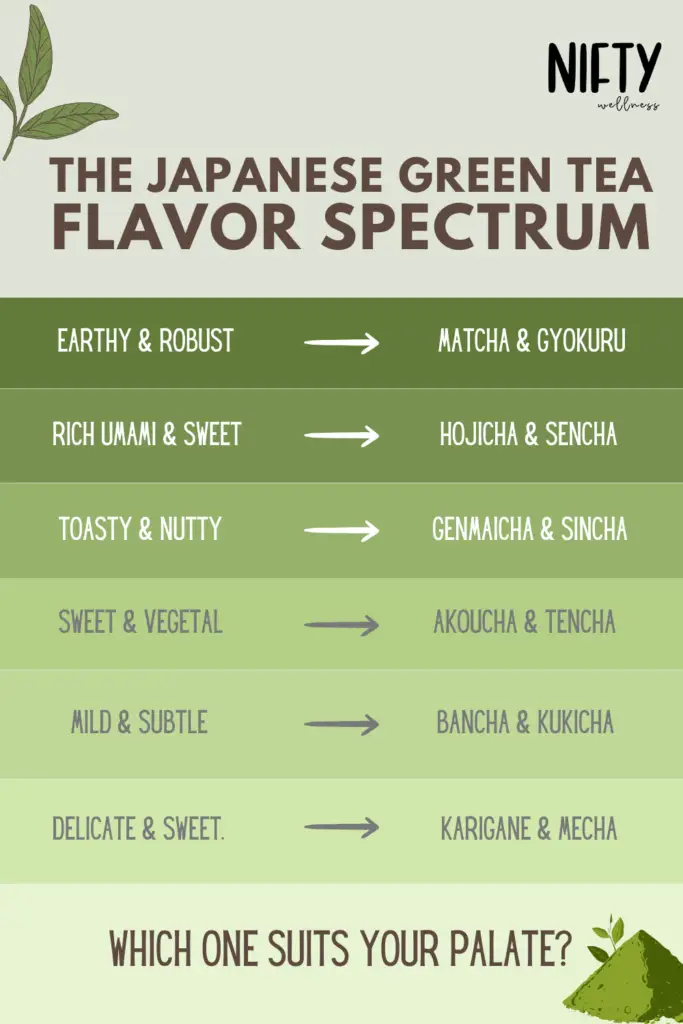
Popularly known as the “Twig Tea”, Kukicha is a unique Japanese green tea made from twigs and stems. Kukicha is a preferred choice among tea enthusiasts, offering a mild, subtly nutty, refreshing, and soothing flavour. Suitable for all-day sipping, Kukicha is liked by adults and children thanks to its low caffeine content.
Kukicha offers a delightful twist to the daily brew experience with its unique blend and mild character for those looking for a gentle and flavourful cup of tea. Its sustainable use of the tea plant parts embodies both flavour and resourcefulness.
Check out our blog 8 Kukicha Tea Benefits, Side Effects & History. Learn how this unique tea can boost your well-being and tantalize your taste buds.
Tamaryokucha: The Curled Beauty
Tamaryokucha, often called “coiled tea,” is a unique Japanese green tea with its distinctive spiral leaves. Like tiny snail shells, these leaves unfurl to reveal a tea with a mild, grassy undertone complemented by tangy, fruity notes. Crafted through a balance of pan-firing and steaming, Tamaryokucha is visually appealing and flavorful. A delightful twist on traditional green teas, Tamaryokucha is perfect for both hot and cold enjoyment.
If you are looking for a delightful tea experience, try Tamaryokucha. From its intriguing character and potential health benefits to its visually captivating appearance, Tamaryokucha is truly unique.
Karigane: The Elixir of Elegance
Karigane, a Japanese green tea, masterfully combines Gyokuro and Sencha stems to craft a refined flavor profile. Encapsulating the essence of both these teas, Karigane offers an enchanting tea experience with its delicate and subtly sweet notes. Known for its inviting aromatic bouquet and great visual appeal, Karigane owes its quality to its careful roasting.
Karigane harmonizes beautifully with desserts and stands confidently as a standalone sip. Showcasing the diversity of Japanese green tea’s diversity, Karigane exemplifies the seamless fusion of tradition and innovation.
Mecha: The Fine Buds
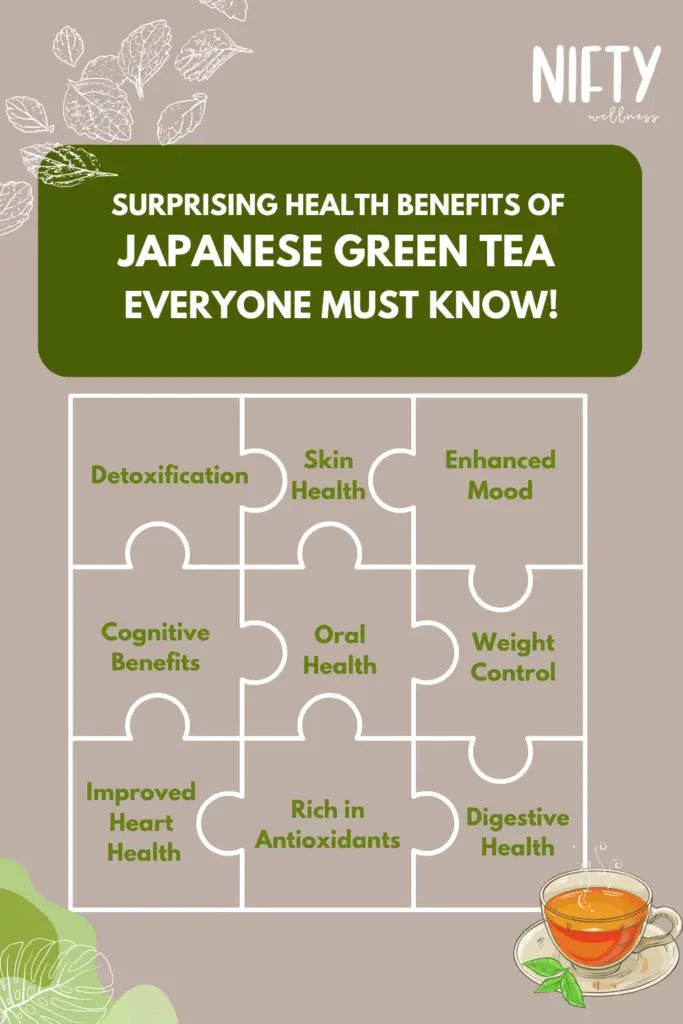
Mecha, a Japanese green tea, is celebrated for its delicate and sweet character. Comprised primarily of tender tea buds, carefully plucked during early growth stages, it embodies the essence of spring’s youthfulness. Perfect for year-round savoring, Mecha is known for its gentle flavor profile that makes it soothing and adaptable.
Mecha can be paired with a light snack or dessert by offering a taste of nature’s rejuvenation. Say yes to a delightful and heart-warming experience that unfolds with every sip.
Genmaimatcha: The Fusion of Flavours
Genmaimatcha, a Japanese green tea, beautifully combines the vibrant essence of Matcha with the comforting notes of roasted brown rice. If you want a unique and interesting flavourful experience, try Genmaimatcha.
A fusion of robust Matcha with a hint of brown rice’s toasty warmth, Genmaimatcha is suitable for both conventional and contemporary tea enthusiasts. Genmaimatcha is a wholesome & harmonious journey for the taste buds, a beautiful blend of tradition and innovation.
Wakoucha: The Japanese Black Tea
Unlike other Japanese teas, Wakoucha is a Japanese black tea. Famed for its bold and robust flavour, Wakoucha stands out from the crowded hoard of the traditional green teas of Japan owing to its rich flavour. Liked by those who wish to try something different, Wakoucha is crafted through complete oxidation, offering a stimulating, flavourful experience.
Enjoy it, whether paired with various foods or savoured on its own. If you wish to go on a tea-tasting adventure, do not forget to savour the boldness of this unique Japanese tea.
Aracha: The Unrefined Treasure
One of the most authentic Japanese green tea, Aracha, is an ode to the simplicity of Japanese culture & traditions. Unlike highly processed teas, Aracha is unrefined, preserving its natural, rustic qualities that honor the true essence of tea leaves. Since Arach is quite close to its origin, so it offers the true tea experience as it is unadulterated and genuinely pure.
In its unpretentious state, Aracha captures the raw vitality of tea with earthy, grassy notes that speak of the fields where it was grown. Its minimal processing allows for an untouched connection to nature, making each cup a unique celebration of tea’s unfiltered essence.
Tencha: The Precursor to Matcha
Tencha, a pivotal powdered green tea player, is matcha production’s foundation. The vibrant green leaves of Tencha are produced after a careful cultivation and shading procedure. Full of tenderness, this Japanese green tea tastes a little sweet with a touch of vegetal essence, harmonizing a balance of the typical umami flavor with a punch of freshness.
The meticulous transformation of Tencha’s leaf to powder is an ode to the craftsmanship and Japanese tea culture. This is what makes it a key ingredient in matcha preparation.
Amidst this splendid array, the question arises: Which Japanese green tea is best? The best Japanese green tea has become a personal preference. Extending a warm welcome to discover the history and flavors, each variety of green tea unfurls a unique facet of Japan’s tea culture. Now that you know an array of Japanese green tea, learning to brew the perfect cup of tea is equally essential.
Brewing the Perfect Cup of Japanese Green Tea
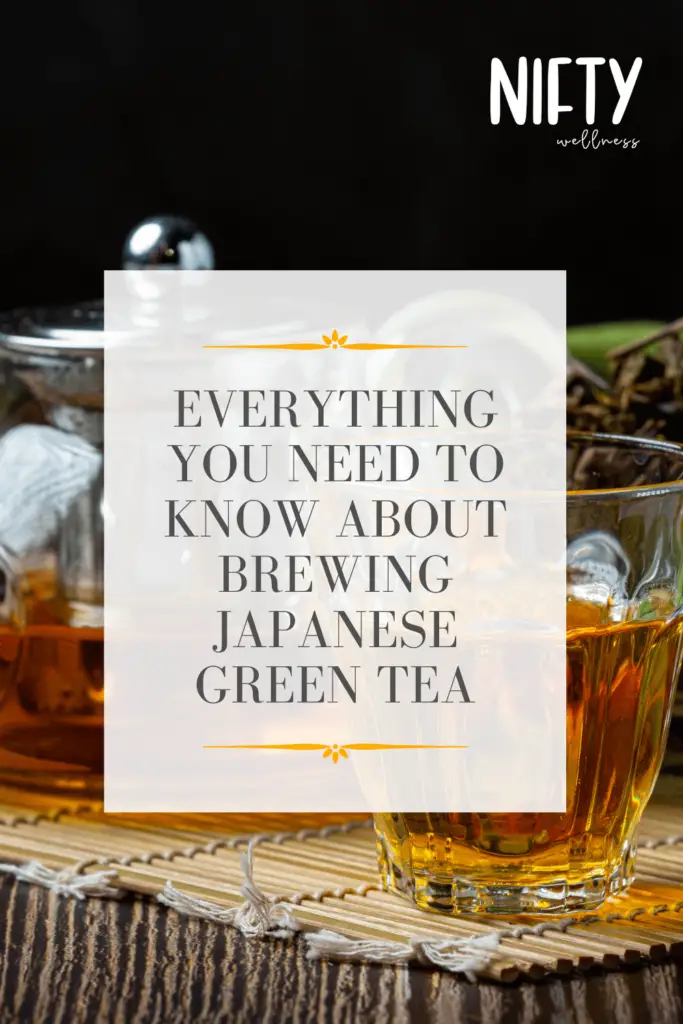
For those who wish to experience the true essence of the finest Japanese green tea, the secret lies in the art of brewing. To unlock the zenith of flavor and vitality, read this guide that will make brewing green tea your cup of tea.
Selecting the Finest Tea Leaves
The first step of this journey begins with cherry-picking the finest tea leaves. Whether Sencha’s allure entices you, gyokuro’s luxury, or Matcha’s complexity, the quality of your tea leaves reign supreme. Distinguished Japanese green tea brands’ offerings are celebrated for authenticity and freshness.
Preparation of Tea ware
Elevate your tea venture by meticulously preparing your traditional Japanese tea ware. An artful ode to the Japanese tea culture, the classic vessels are crafted to magnify and enhance the flavour and fragrance of Japanese tea. A homage to the Japanese culture, the presentation is as important, if not more, as tea preparation.
Measuring the Tea
Measuring the full spectrum of Japanese green tea’s flavor and health benefits is key! A teaspoon of tea leaves per cup typically suffices, but variations arise depending on the chosen Japanese green tea variety.
Water Temperature
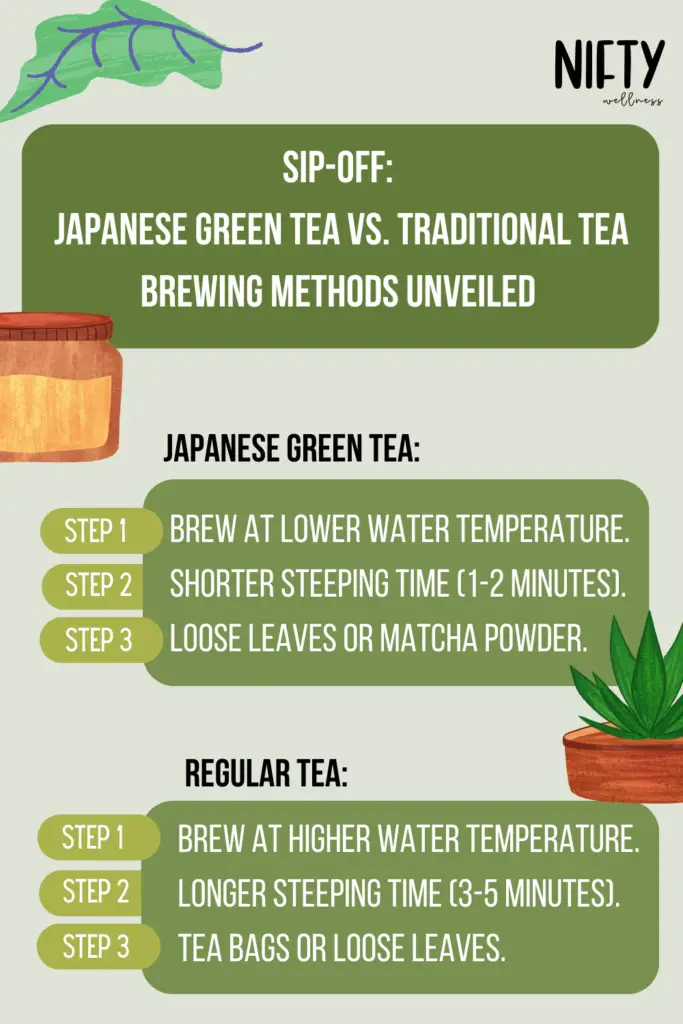
Another important part of the brewing process is comprehending the critical role of water temperature. Delicate teas like sencha and gyokuro thrive at a gentle 140°F (60°C). Matcha, on the other hand, demands slightly cooler water, around 175°F (80°C). Experimentation with water temperature unfurls nuances in taste and health benefits.
Brewing Time and the Virtue of Patience
Each Japanese green tea variant imposes its unique brewing time. Sencha may unfurl its flavors in 30-60 seconds, while gyokuro may demand up to 3 minutes. Matcha, distinctively, forgoes steeping, relying on a masterful whisking technique. Cultivating patience in brewing ensures the perfect cup of Japanese green tea for both health and taste.
Embrace the Beauty of the Pour
Pouring freshly brewed Japanese green tea can become a graceful, almost meditative experience. Savor the ritualistic cadence. Immerse yourself in the mesmerizing hues and aromatic tapestry as you elegantly fill your cup or bowl.
Savour the Aroma and Taste

Before your first sip, pause to bask in the captivating aroma of your best Japanese green tea. A fresh, grassy scent often pervades these teas. Let the unique taste of the rich Japanese tea culture dance across your palate and take over your taste buds as you enjoy the tea, one sip at a time.
Enjoy in Good Company
Japanese green tea achieves its zenith in the company of friends and family. Share the essence of Japanese tea culture, indulge in flavours, and embrace the centuries-old health benefits. Whether in solitude or amidst loved ones, Japanese green tea epitomizes a harmonious blend of tradition, taste, and well-being.
Conclusion
In short, Japanese Green Tea is not just a beverage but a unique experience that mirrors Japan’s rich culture and traditions. Let the goodness of Japanese green tea enrich your life with flavor, tradition, and well-being.
Prepare to embark on this enchanting odyssey, where flavour intertwines with well-being, all within the embrace of the best Japanese green tea.
Frequently Asked Questions (FAQs)
How much caffeine does Japanese Green Tea contain?
Japanese green tea generally contains a modest caffeine content, typically 30 to 50 milligrams per 8-ounce cup. In contrast, coffee packs a stronger caffeine punch, with approximately 95 milligrams per 8-ounce cup. As a consequence, this makes Japanese green tea a milder and more balanced choice for those who are looking for a little pick me up from caffeine but something gentler than coffee.
Is Matcha Good for Weight Loss?
Yes, Matcha is often considered beneficial for weight loss. It contains a specific type of caffeine called theophylline, which may help boost metabolism and burn calories. Additionally, Matcha is rich in antioxidants called catechins, particularly epigallocatechin gallate (EGCG), linked to increased fat oxidation and improved weight loss during exercise. However, it’s essential to incorporate Matcha into a balanced diet and an active lifestyle for the best weight loss results.
How should I store Japanese green tea to maintain its freshness?
To maintain the freshness of Japanese green tea, follow these guidelines:
1. Use an airtight, opaque container to shield from air, moisture, and light.
2. Store in a cool, dry place away from heat, humidity, and strong odours.
3. Reseal pouches tightly to prevent air entry, consider zip-lock bags.
4. Avoid freezing, as it can impact the flavour.
5. Consume within six months to a year for optimal taste and aroma, preserving tea quality.
What Is the Difference Between Gyokuro and Sencha?
Gyokuro and Sencha are Japanese green teas with different cultivation, flavour, and brewing methods. Gyokuro is grown in the shade, resulting in a sweeter and milder taste, while Sencha is grown in direct sunlight, offering a grassier and more robust flavour. Additionally, Gyokuro requires lower water temperature and shorter brewing time than Sencha.
Is Japanese green tea safe for pregnant women?
Moderate Japanese green tea consumption during pregnancy is generally safe, but monitoring caffeine intake is important. Firstly, choosing high-quality Japanese green teas can help minimize potential concerns. More importantly, whenever in doubt or if you have specific questions about your pregnancy, consulting with a healthcare professional is always a prudent choice to ensure your and your baby’s safety and well-being.

